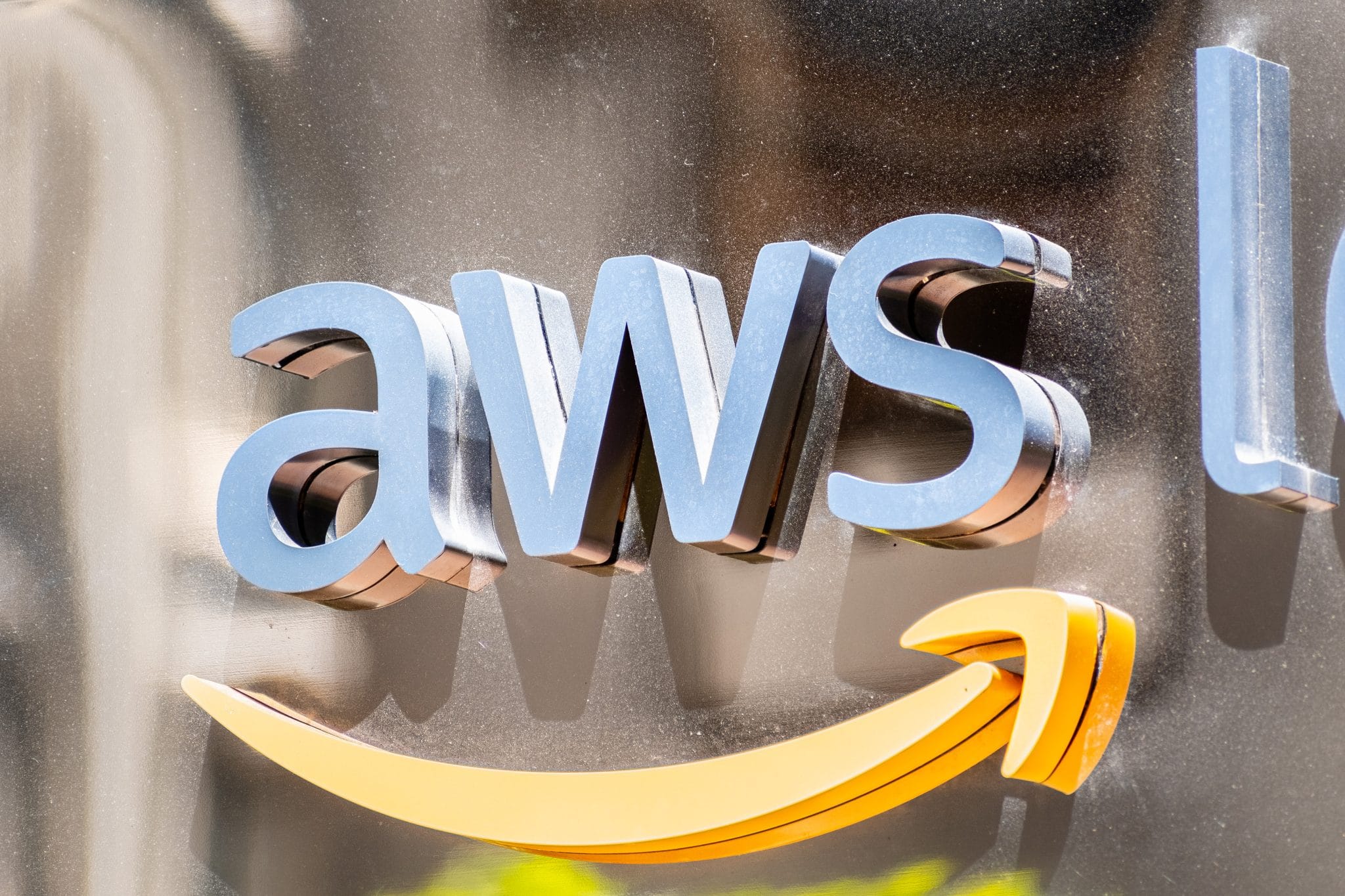In 2023, the San Diego County Sheriff’s Office tested a new surveillance tool from Amazon Web Services (AWS) that used AI to scan live drone video for weapons or other objects and alert deputies to their locations. The department ultimately declined to adopt it, but the proposal revealed how far Amazon has moved beyond cloud computing and into the business of law enforcement technology.
Through AWS, the company is becoming a key supplier and broker for police, using its massive infrastructure and network of partners to place AI at the core of modern surveillance.
AWS has positioned itself not just as a host of police data but also as a promoter and intermediary for surveillance tools. Internal emails from West Coast law enforcement agencies show that AWS’s “law enforcement and school safety” team has been pushing a portfolio of surveillance technologies directly to police departments.
These include license-plate tracking from Flock Safety; analytics and data fusion tools from Lucidus Solutions (now part of Flock) and C3 AI; weapons detection from ZeroEyes; bodycam-based reporting from Abel Police and Mark43; video search and face tracking from Veritone; and voice analytics of inmate calls via Leo Technologies’ Verus. Together, these tools target a police technology market that could exceed $11 billion.
To strengthen its grip, Amazon isn’t relying solely on sales. In conversations with agencies such as Riverside County, California, AWS staffers have offered to help them tap state and federal grant programs like California’s $242 million Organized Retail Theft Prevention fund.
AWS often serves as a bridge for smaller surveillance startups, helping introduce them to law enforcement customers. In this arrangement, AWS becomes more than a vendor or reseller. It becomes a platform, ecosystem, and conduit all at once.
Amazon defends its approach as part of its public-sector role, saying it provides tools that “protect the rights of citizens” and follows legal requirements. But critics see the company as quietly enabling massive surveillance by tying together private networks like Ring cameras and public data channels.
In September, Amazon revealed a revamped Ring camera lineup featuring two notable AI features, Familiar Faces and Search Party. Familiar Faces uses facial recognition and lets users tag neighbors or friends so future alerts identify them by name rather than generic motion.
The feature is slated for December, though it will be disabled in places with stricter biometric laws such as Illinois, Texas, and Portland.
Search Party is a pet-locating tool powered by camera networks and AI. These additions go beyond consumer convenience by inching home camera networks toward always-on biometric systems that could feed into policing pipelines.
Ever since Ring founder Jamie Siminoff returned to lead the company in April, Ring has focused more on surveillance and security features, revived partnerships with police-tech firms, and accelerated its use of artificial intelligence. The shift signals that Ring is moving its camera network closer to direct use by law enforcement.
Meanwhile, AWS is upgrading its infrastructure to support heavier and more sensitive workloads. It plans to launch a second Secret-West cloud region before the end of the year that is accredited to host U.S. Secret classification data, giving agencies resilience and flexibility for classified deployments.
Amazon’s GovCloud service has earned FedRAMP High and Department of Defense Impact Level 4 and 5 certifications, making AWS more viable for hosting defense and federal AI systems.
In August, the U.S. General Services Administration signed a OneGov agreement with AWS and promised up to $1 billion in incentives for federal agencies to adopt AWS cloud and AI services through 2028.
The deal embeds AWS even deeper into government procurement pipelines, making AWS the default choice for many agencies. On the defense front, AWS has already won the National Security Agency’s (NSA) WildandStormy Hybrid Compute Initiative contract and is well-placed to compete in upcoming multi-cloud bids.
WildandStormy is a plan to modernize the NSA’s data infrastructure by moving intelligence data to a commercial cloud environment. The project aims to handle the NSA’s large volume of signals intelligence and foreign surveillance data more efficiently by leveraging cloud capabilities for processing and analytics.
These moves have reignited longstanding concerns over privacy, especially considering facial recognition. Amazon paused direct sales of Rekognition to police in 2020 after studies showed racial bias, but critics point out that Amazon never fully disabled the capability.
In the years since, the Department of Justice has reportedly used Rekognition under contracts that sidestepped the earlier moratorium. That raises questions about how enforceable such bans are in practice.
For example, in 2024, Amazon removed a “Request for Assistance” feature from Ring, which allowed law enforcement to request camera footage without warrants. But that change doesn’t stop police from seeking footage via warrants or emergency exceptions.
The larger worry is that Amazon’s deep integration means even small new features can have wide surveillance implications.
Some states and cities have biometric privacy laws that might block or limit features like Familiar Faces. But many municipal governments lack robust rules or enforcement. Meanwhile, federal grants continue to subsidize camera deployments, fusion centers, and AI pilots, locking agencies into expensive, high-tech systems.
Another weak point is transparency in procurement. Many local law enforcement agencies do not know how deeply AWS influences partner deals or how much of the surveillance systems Amazon helps design or deploy. As cloud services and surveillance become inseparable, vendor boundaries blur and accountability shrinks.
From street cameras to drones and regional fusion hubs, surveillance systems are increasingly built atop AWS. The pitch Amazon makes to law enforcement is about more than raw infrastructure. It is also about access, connections, and momentum. Many police leaders see AWS as a shortcut to technology they’d otherwise not reach. Some agencies, like San Diego’s IT leadership, have said AWS brings credibility and visibility to innovative tools.
Even when projects slow or underdeliver, AWS gains. C3 AI’s Project Sherlock, for example, is a real-time crime center attempt across multiple jurisdictions. Despite delays and criticisms, the project generated millions in revenue and AWS insisted its role was simply hosting, not building. But hosting itself locks in dependencies.
Today, AWS isn’t just behind surveillance tools, it also is becoming the underlying standard.
The International Association of Chiefs of Police conference in Denver later this month underscores how fully surveillance-as-a-service is maturing. AWS is sponsoring the Wellness Lounge instead of flashy parties, but its influence behind the scenes will be unmistakable.
Related Posts
Article Topics
Amazon | Amazon Rekognition | Amazon Web Services (AWS) | biometrics | facial recognition | law enforcement | Ring doorbells | video surveillance
Latest Biometrics News
Nearly 70 percent of travelers would consider using a biometric gateway, according to recent research. This type of support is…
The Senegalese government and Visa have held discussions for a collaboration that is expected to expand the company’s digital payment…
NextG’s wholly owned subsidiary Datasonic will modernize Malysia’s national ID card infrastructure in a six-year contract worth around 733 million…
A common problem with regulations is that of adaptation. A country enacts a law that restricts social media accounts to…
https://www.biometricupdate.com/202510/amazons-quiet-rise-as-a-power-broker-in-police-surveillance

